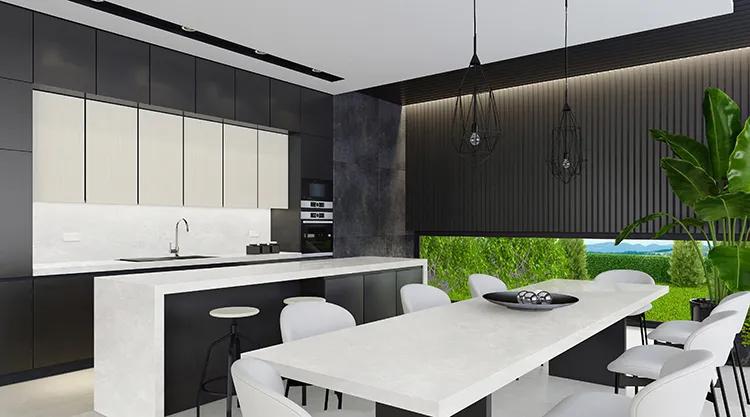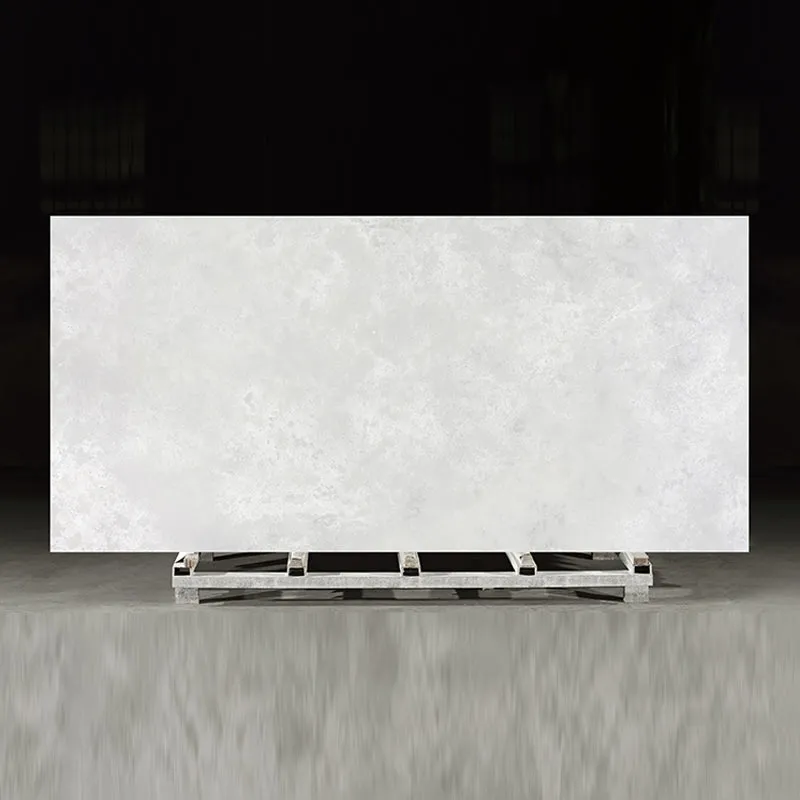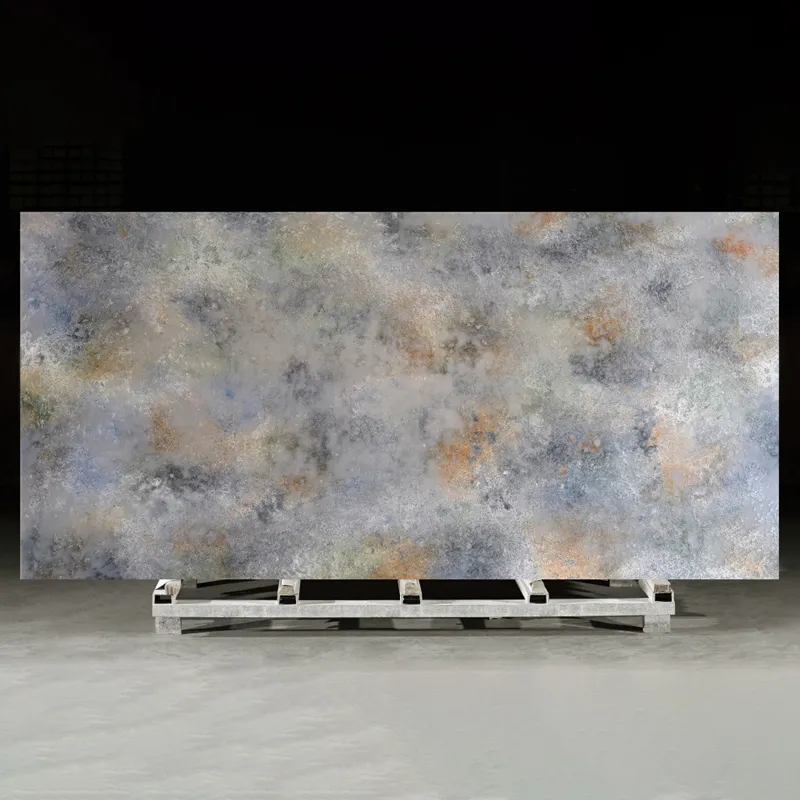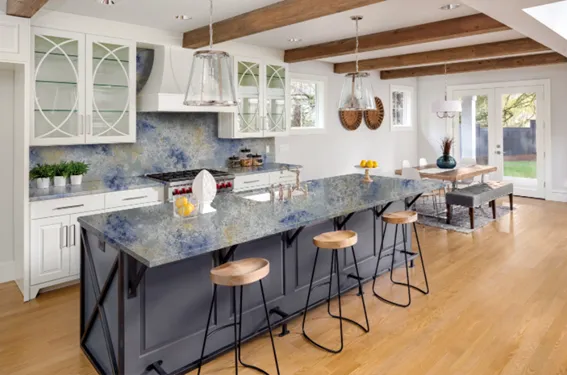Quartz stone benchtops have become one of the most widely used countertop materials in modern kitchen and bathroom decoration due to their high hardness, strong stain resistance and beautiful appearance. However, although quartz stone benchtops have made great progress in processing accuracy and splicing technology, the treatment of seams is still an important factor affecting the overall aesthetics and user experience.
This article will systematically analyze and explain the issue of "how to hide the seams of quartz stone benchtops" from multiple aspects to help readers better understand and apply relevant technologies and methods.

Why is it difficult to completely eliminate the seams of quartz stone benchtops?
Before we delve into the methods of hiding seams, we first need to understand why benchtops leave seams after splicing. The following are the main reasons:
1. Material properties
Quartz stone countertops are made of natural quartz sand, resin and polymer composite materials by high-pressure pressing. Although the manufacturing process is precise, its thermal expansion and contraction coefficient is related to factors such as ambient temperature and humidity, and will change slightly during use.
2. Installation site environment restrictions
The processing of quartz stone benchtops is usually completed in the factory. It is difficult to completely replicate the processing conditions at the installation site. There are inevitable errors in on-site splicing, which makes it difficult to achieve "seamless and visible" joints.
3. Size and transportation restrictions
Usually, the width of a single quartz stone countertop is limited. If the countertop is long or contains special-shaped structures, such as L-shaped corners, sinks, stove openings, etc., it must be spliced in sections, which also increases the number of joints.
4. Color difference and texture matching difficulty
Although the colors of quartz stone countertops in the same batch are basically the same, the random distribution of natural quartz particles will cause subtle color differences, making the joints easy to expose.
After understanding the above reasons, we can find more targeted ways to hide the seams of quartz stone countertops.

Quartz stone countertop joint types and characteristics
In practical applications, the joint forms of quartz stone benchtops are mainly divided into the following categories:
1. Straight-line splicing
Used for side-by-side splicing of long countertops, generally most common in straight-line areas against walls. This splicing method requires high cutting accuracy and joint glue treatment.
2. L-shaped corner splicing
Usually used in kitchen corners, the quartz stone countertops in two directions need to be angled. This type of joint treatment is more complicated because it involves angle docking and pattern alignment.
3. Special-shaped splicing
When the countertop needs to surround a column or irregular wall, multiple special-shaped quartz stone benchtops need to be spliced together. This type of joint is the most difficult to hide.
4. Embedded splicing
Such as in stoves, sink areas, etc., quartz stone benchtops are cut and spliced around these structures. This type of joint is usually short, but because it is located in the visual center, it is particularly important to hide it.

Key technical means to hide the seams of quartz stone countertops
1. Precision processing: improve cutting and chamfering accuracy
Whether the seams are obvious depends first on the processing accuracy of the quartz stone benchtop itself. In the factory stage, the use of high-precision CNC equipment for cutting can greatly reduce the gap between the seams.
• Use a water jet or CNC bridge cutting machine for cutting, and the error is controlled within ±0.5mm;
• Fine chamfering must be performed at the joint to ensure that the contact surfaces of the two quartz stone benchtop panels fit closely;
• Dry pre-joining is performed before on-site splicing to check whether the gap between the seams is uniform.
2. Selection and application of professional splicing glue
The use of splicing glue directly determines the beauty of the seams. High-quality quartz stone splicing glue has a variety of colors that can match the main color of the quartz stone countertop.
• Choose glue with the smallest color difference, such as custom glue according to the color of the quartz stone benchtop;
• Two-component AB glue is more effective, with high strength and not easy to crack after drying;
• The glue should be fully stirred before splicing to avoid uneven color;
• The glue joint should be polished after treatment to make the joint transition naturally with the entire countertop.
3. Pattern alignment: Enhance visual unity
For quartz stone countertops with obvious patterns (such as marble, water ripples, granular patterns, etc.), the pattern docking is the key to hiding the seams.
• Plan the pattern direction during the splicing design stage, and try to achieve "spinning along the grain";
• Use computer modeling or drawing to layout the pattern direction in advance;
• During the installation process, fine-tune the splicing position according to the pattern changes to ensure a natural transition of the pattern at the joint.
4. Reasonable design of splicing position
Try to arrange the splicing position of the quartz stone benchtop in an inconspicuous or functional position, which is another effective way to hide the seams.
• The joints are set against the wall or in the area where the kitchen utensils are blocked;
• Use cabinets, under-counter basins and other structures to block the joints;
• If the countertop is U-shaped or L-shaped, the joints can be set at the corners to form a visual block;
• Avoid setting the joints in a position where the human eye is easily focused, such as in front of the stove or on the edge of the wash basin.
5. Polishing: Details determine success or failure
After the splicing is completed, the quartz stone benchtop must be polished. Polishing not only smoothes the joints, but also improves the overall visual unity.
• Use sandpaper above 300# for fine polishing;
• The speed of the polishing tool should be controlled within an appropriate range to avoid discoloration caused by high temperature;
• When polishing, operate along the direction of the pattern to avoid damaging the texture;
• Clean up the residual glue and dust after polishing to ensure that the joints are smooth.
Material selection and matching strategies help hide joints
1. Choose quartz stone countertops with uniform colors
The more uniform the color and the finer the texture of the quartz stone benchtop, the easier it is to hide the joints. Especially in spaces that require multiple splicing, it is key to avoid using large patterns and patterns with a strong sense of direction.
• It is recommended to choose solid color, micro-particle, and light-colored quartz stone benchtops;
• Plates with uniform particles and consistent distribution are easier to splice without marks;
• Try to use products from the same batch to avoid color differences caused by batch differences.
2. Reasonably control the size of quartz stone countertops
Controlling the size of the entire countertop at the beginning of the design can effectively reduce the number of joints.
• The size of each quartz stone benchtop should be controlled within the transportation and processing limits;
• Reduce the cutting of large plates and avoid splicing in the middle;
• Use complete plates to cover key areas, and concentrate the joints in auxiliary areas.

Installation specifications ensure the hidden effect of joints
During the construction process, the installation process also determines the final effect. The following specifications can help better hide the seams of quartz stone countertops:
1. Flat support under the countertop
A reasonable support structure must be set up under the countertop to prevent the board from deforming, causing cracking or warping of the seams.
2. Environmental inspection before splicing
Ensure that the splicing area is clean, dust-free and dry; avoid affecting the adhesion of glue due to poor construction environment.
3. Use professional suction cups to press
During installation, use a special countertop splicing clamp or suction cup tool to pressurize the seams to make them fit tightly.
4. Polish and grind after the glue is cured
The glue for the splicing seams must be completely dried (usually 6 to 12 hours) before polishing to prevent the glue from falling off or discoloring.
Maintenance to prevent seams from being exposed
Hiding seams is not only a process issue during installation, but also an important aspect of later maintenance.
1. Avoid high temperature concentration
The heat resistance of the seams is slightly low. Placing hot pots and hot kettles directly for a long time will cause discoloration or cracking.
2. Avoid using strong acid and alkali cleaners
Certain chemical cleaning products can corrode the glue in the joints, causing degumming or discoloration.
3. Clean the joints regularly
Avoid long-term accumulation of dirt in the gaps, forming visible black lines and affecting the appearance.
4. Repair small cracks or degumming in time
If cracks or darkening are found in the joints, they should be repaired as soon as possible with special glue to prevent the problem from expanding.
Foshan Rongguan Glass Material for Building Co., Ltd. (Rongguan) continues to lead the way in the global building materials industry with its innovative solutions. Specializing in premium quartz stone countertops, terrazzo flooring, and artificial marble, our products are tailored to meet the demands of modern architecture. From classic Roman-style clay tiles to sleek and durable finishes, Rongguan’s offerings cater to both traditional and contemporary aesthetics. Benefit from our wholesale discounts, promotional offers, and customized solutions designed for contractors, retailers, and developers worldwide.

